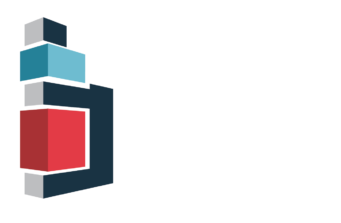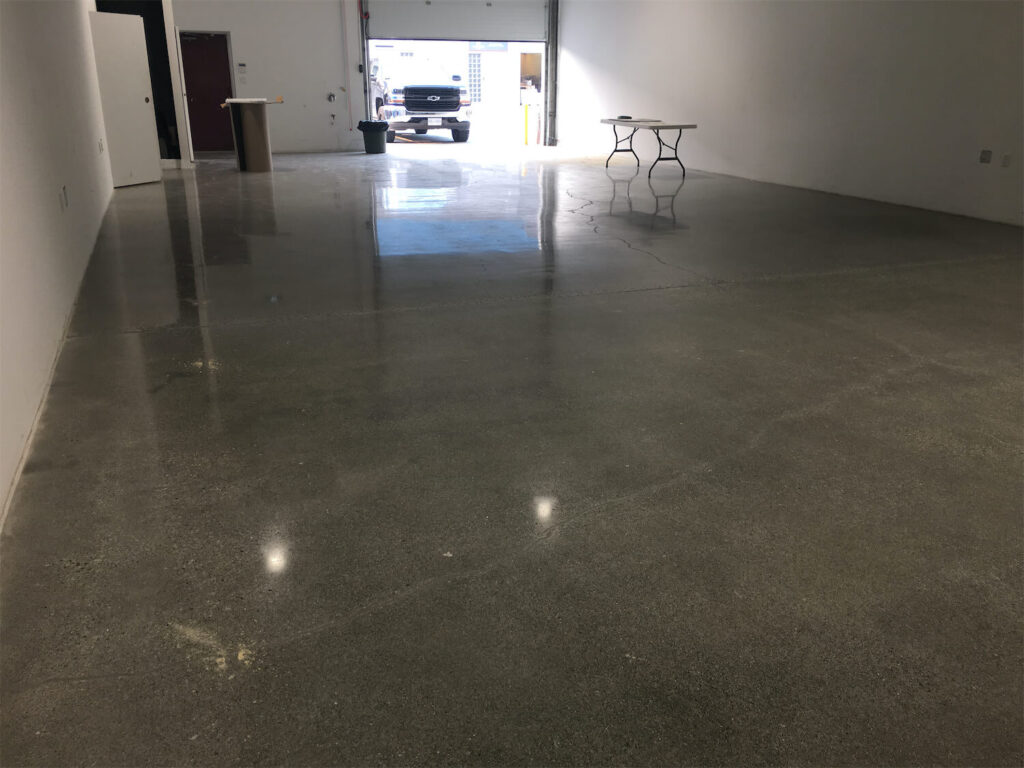
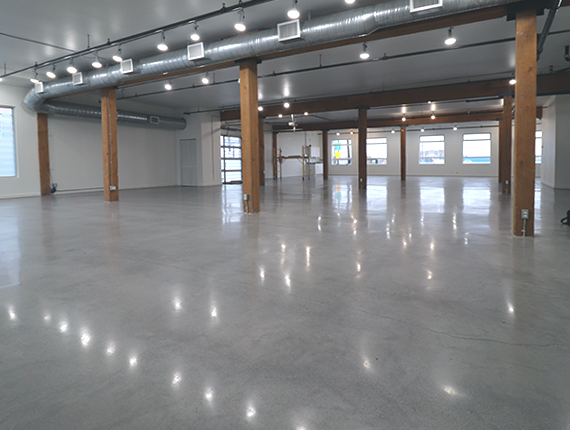
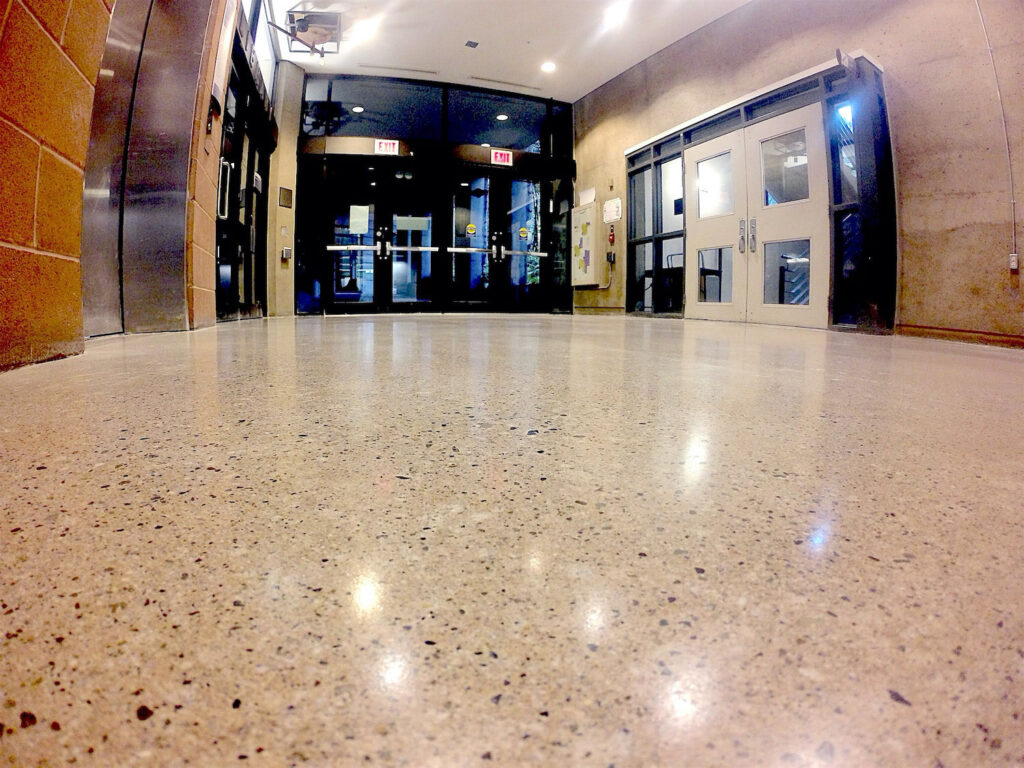
New Generation Concrete Polishing
THE APPROACH
Concrete has become a preferred flooring system for commercial, educational, industrial, and residential builds, etc. because of its unique characteristics, resiliency and aesthetic properties. Being environmentally friendly, with excellent durability, low cost maintenance and offering a variety of finishes. Polished concrete has taken a place at the top of the floor systems available today.
Each floor is unique, each floor presents its own characteristics and will be a one of a kind. We, at NGC work with clients to understand their vision and help provide the best options available to them. We also work closely with design teams to ensure that expectations are met by participating from the planning stages providing input and ensuring that best practices are met from start to finish. Be it a floor that has been covered by layers of old floor systems such as glue/mastics, or be it a new slab, we at NGC can provide options to effectively provide a functional floor that meets both budget and a tight schedule.
The Goal
To provide the best flooring possible considering factors such as durability, aesthetics, cost, and ease of maintenance for the end user.
Owner: Eagle Harbour Management
SEMI-POLISHED
HIGH POLISH

Concrete Polish Levels
A level 1 ground polish usually can be obtained by stopping below the100-grit resin bond. When you look directly down at the floor, it will appear somewhat hazy with little if any clarity or reflection.
A level 2 honed polish is obtained by stopping at the 400-grit resin bond, producing a low-sheen finish. When you look directly down at the finished floor and at a distance of roughly 100 feet, you can start to see a slight overhead reflection. This grit level produces a low-luster matte finish.
A level 3 polish is achieved by going up to an 800-grit or higher diamond abrasive. The surface will have a much higher sheen than that of level 2 finish, and you’ll start to see good light reflectivity. At a distance of 30 to 50 feet, the floor will clearly reflect side and overhead lighting.
This level of polish produces a high degree of shine, so that when standing directly over the surface, you can see your reflection with total clarity. Also, the floor appears to be wet when viewed from different vantage points. A level 4 polish is obtained by going up to a 3,000-grit resin-bond diamond or by burnishing the floor with a high-speed burnisher outfitted with specialty buffing pads.
polishing: A Multi-step Process
THE PROCESS
Polished concrete is a meticulously crafted, multi-step process that transforms a concrete floor into a sleek and durable surface. Using advanced bonded abrasive tools, the floor is mechanically ground, honed, and polished to perfection. Each pass refines the surface, achieving the desired level of smoothness and shine, tailored to your aesthetic and functional needs.
This process also includes the use of penetrant chemicals known as hardeners or densifiers which penetrate into the concrete to create a chemical reaction. This helps in hardening and dust-proofing the surface. During concrete polishing, the surface is processed through a series of steps (in general a minimum of 4 grinding steps of processing is considered polished concrete) utilizing progressively finer grinding tools. Polished concrete floors generally get sealed and burnished.
Burnishing smooths and compacts the top layer, resulting in a reflective sheen. Burnishing is often used as a cost-effective way to achieve a glossy finish on concrete floors, especially in areas where durability and aesthetics are both priorities.
Levels of Polish
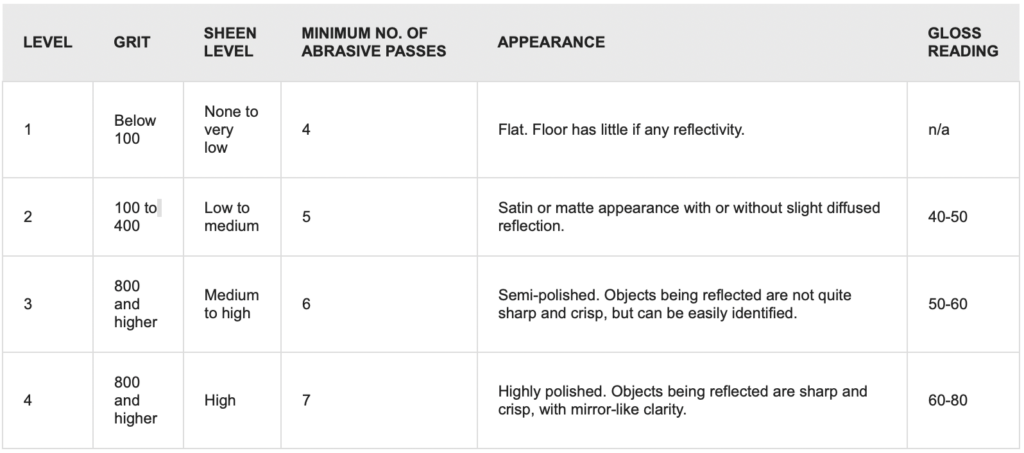
Aggregate Exposure
Aggregate exposures range from “cream,” with very little exposure (Class A), to large aggregate exposure up to ¼ inch (Class D). Because there is very little cut depth, a cream exposure will not remove existing blemishes or surface imperfections in the concrete. A Class D aggregate exposure is very attractive, but requires more aggressive grinding, which can increase the cost of the project and expose pits or divots in the concrete that will need to be filled. Note that varying degrees of sand and aggregate exposure, not to mention small pits and divots in the surface, can significantly influence gloss readings.
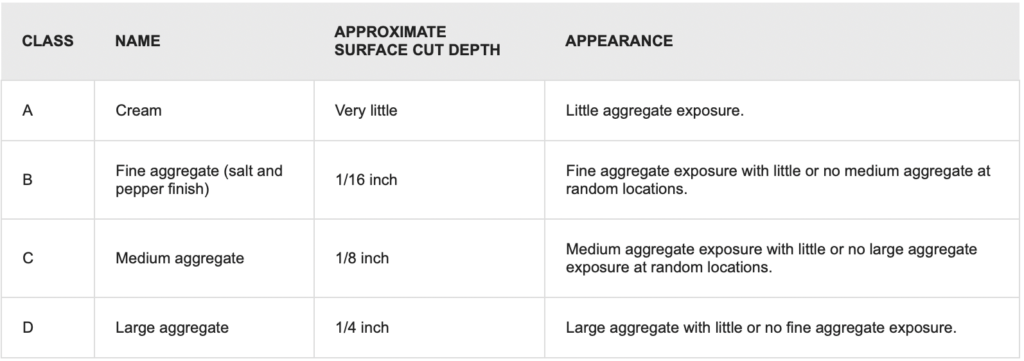
Source: CPAA
Polished concrete is a “green” flooring system and LEED approved
